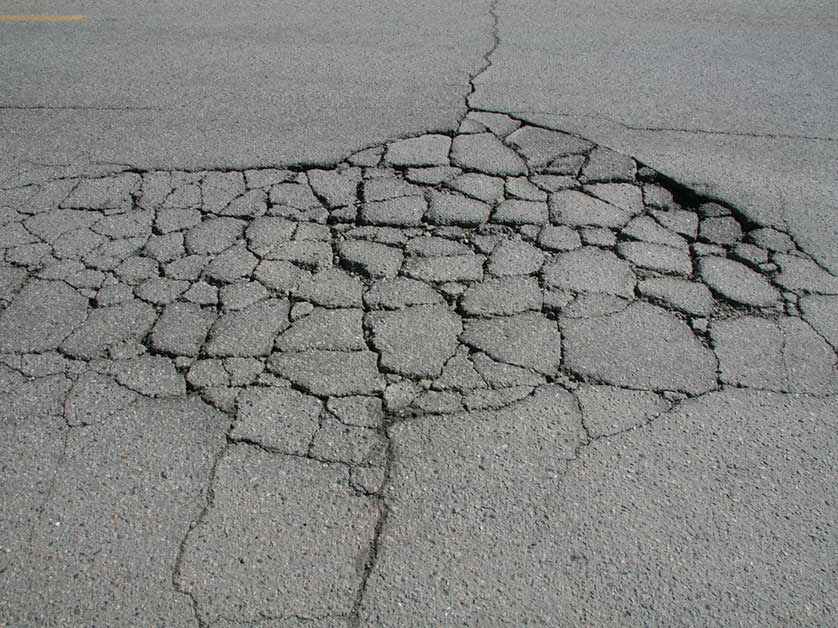
Known for its appearance that resembles alligator skin, fatigue cracking in asphalt is not just an aesthetic issue but a signal of underlying structural problems that, if left unaddressed, can lead to severe pavement damage. Learn how you can avoid expensive problems and troublesome parking and navigation issues from fatigue cracking in today’s post from Bonness.
Causes Behind Fatigue Cracking in Asphalt
The phenomenon of fatigue cracking can be attributed to several factors, most notable of which is the repeated load-bearing task the pavement undergoes. Heavy traffic, particularly in high-traffic areas like highways, parking lots and driveways, is a major contributor. As vehicles traverse these surfaces regularly, the asphalt begins to show signs of distress, leading to the formation of these interconnected cracks.
But it’s not just the traffic load; the thickness of the pavement and the quality of the asphalt mix play substantial roles as well. A pavement designed too thin for its intended load will inevitably succumb to fatigue cracking. The environmental conditions alongside the natural aging of the asphalt further exacerbate the situation. Aging makes the asphalt less flexible and more prone to cracking under pressure, while poor quality asphalt mix lacks the resilience required to withstand the constant stress.
Strategies To Avoid Fatigue Cracking
Preventative measures are far more cost-effective and less labor-intensive than repairing fatigue-cracked asphalt. Understanding and implementing proper pavement design is critical, considering factors like expected traffic loads and pavement thickness. Investing in a robust drainage system also mitigates water penetration risks, a notable contributor to sub-base erosion and, by extension, fatigue cracking. Regular maintenance, including timely sealcoating and crack sealing, extends the pavement’s life by protecting it from the elements and long-term wear and tear.
The Importance of Asphalt Repairs
Upon the detection of fatigue cracking, the immediate step should be evaluating the extent of the damage to determine the appropriate repair technique. Minor, isolated damage might benefit from crack filling and sealing to prevent further degradation. However, widespread or severe cracking necessitates more in-depth repairs, possibly involving sub-base reconstruction or complete resurfacing with new asphalt. Not only does this restore the pavement’s functionality, but it also prevents potential safety hazards.
If you have an asphalt pavement or driveway that’s displaying signs of fatigue cracking, be sure to get in touch with the experts at Bonness. Prompt repairs are key to ensure the problem doesn’t grow worse and become too expensive to deal with. Call us at (239) 597-6221, or fill out this contact form to get started.
